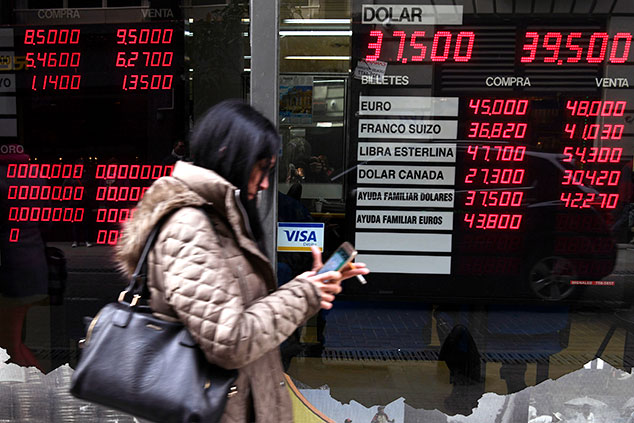
This article is taken from our FREE daily investment email Money Morning.
Every day, MoneyWeek’s executive editor John Stepek and guest contributors explain how current economic and political developments are affecting the markets and your wealth, and give you pointers on how you can profit.
In this week’s issue of MoneyWeek magazine
●
America parties on – but it won’t be able to avoid the hangover
●
Do you have a bullshit job?
●
Don’t lose your child’s savings
●
A risky punt on promising new drugs
●
Three solid dividend growers for turbulent times
● Share tips of the week
Not a subscriber? Sign up here
It’s useful to take some time out from markets. It helps you to get a bit of perspective on what’s important and what’s noise.
I’ve just been out of the office for a fortnight. I spent some of it at my colleague Merryn Somerset Webb’s brilliant panel discussion on Adam Smith at Panmure House up in Edinburgh (more on that another time). And I spent the rest of it simply taking time off.
So what better way to get back into the swing of things than by taking a look at what’s happening to the most important price in the world.
That of the US dollar.
Why the US dollar matters so much
One of the key features of financial markets this year has been the rising US dollar. If you want to know why various long-term potential flashpoints in emerging markets (notably Turkey and Argentina) have finally been set off this year, then you need only look to the strength of the US currency.
Why does it matter so much?
Because the US dollar is the world’s reserve currency. It’s used in the vast majority of financial transactions.
In computing terms, it’s the operating software for the global financial system. In effect, if you want to participate in global trade or capital flows, then at some point, you’re going to need US dollars.
If US dollars become more expensive, then that means they’re harder to get hold of if you are using another currency. In turn, that effectively means that a rising US dollar means that monetary policy is being tightened for the entire world.
This doesn’t necessarily bother the US too much – it makes the dollars after all. But it is a problem for everyone else.
So why has the US dollar been getting more expensive? It all boils down to interest rates. They are going up in the US, but staying pretty flat in most of the rest of the world.
That has made US assets more attractive to investors. As money flows towards the US and away from other places, the price of the dollar and US assets has gone up – and the price of other assets has gone down. In general, the riskier the asset, the harder it has been hit.
Turkey and Argentina are the most obvious casualties, but purely because they were the most vulnerable in the first place. Other assets have been hard hit too – emerging markets more broadly, and commodities too. In general, investors have been acting more defensively.
So does this represent a big turn in the markets? Are we on the cusp of a much more significant crisis? It would certainly add a lovely bit of piquancy to the ten-year anniversary of Lehman Brothers collapsing.
But I don’t think we’re there yet.
The Fed “put” is still in place
As I’ve said before on many occasions, my base-case scenario is that the next crisis – however it manifests specifically – will be primarily driven by inflation, rather than a deflationary slump.
At its heart, that view is based on the assumption that global central banks – and the US Federal Reserve in particular – has no intention of allowing a repeat of 2008 any time soon. That, in turn, implies that global central banks will not raise interest rates until they feel forced to by inflation.
Bull markets tend to be derailed by tightening monetary policy – or at least, they tend to end during periods when interest rates are going up. I’ve been assuming (and I think markets have too) that central banks would be very wary of raising rates as a result.
What has freaked markets out most in the last few months (for want of a better word), is the idea that the Fed is genuinely taking a tougher line than the old Greenspan/Bernanke/Yellen Fed.
This concern that Jerome Powell is indifferent to the fate of global stockmarkets (at least compared to his predecessors) is what has lain at the heart of the various minor panics over the past few months. Markets have grown used to the “Greenspan put” – the assumption that the Fed would always be there to bail them out. Under Powell, that has come under question.
However, there are signs that Powell is relenting a little. At his much-watched speech at the annual Jackson Hole get-together last month, he spoke about moving “conservatively” and noted that “when unsure of the potency of a medicine, start with a somewhat smaller dose”.
He even invoked European Central Bank boss Mario Draghi’s magic words – saying that the Fed would “do whatever it takes”. To me that’s a codeword for – “don’t worry, we’ve still g